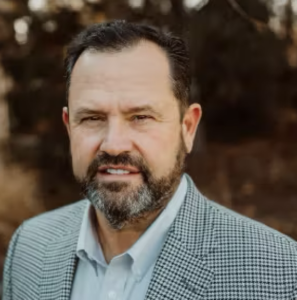Despite continued uncertainty over the future of federal tax rules on micro-captive insurance companies, the instruments seem to be increasingly popular for small businesses, especially in Florida, where rates for traditional commercial insurance have soared in recent years.
SRA 831(b) Admin, an Idaho-based firm that helps businesses set up micro-captives, said the number of micro-captives for clients in Florida has grown by 2,200 percent in the last five years.
“It’s a challenge for businesses to get insurance in Florida now—the rates have gone so high,” said Van Carlson, founder and manager of SRA.
Many traditional insurance policies in Florida no longer provide replacement value, particularly on roof damage, he noted. That has prompted more than a few businesses to self-insure at least part of the risk with higher deductibles and lower policy limits on their primary coverage.
Although the firm won’t reveal the actual number of captives it has helped create, some in the industry estimate the number to be in the hundreds in Florida—and counting. Florida and other states’ regulators do not track most captives, since many are domiciled in other jurisdictions.
Related article: Are Captives the Answer for Uninsured Fla., Calif. HOAs? Utah Opens Door
Nationwide, the top industries turning to micros include health care, dentistry, construction, financial and legal services, retail and property management, Carlson’s company noted. The arrangement has been likened to an employee’s 401(k) retirement plan: Taxes are deferred for future risks.

“It’s been beneficial to me,” said Dr. Shaunda Kelly, who operates several businesses in Florida, including an oral and facial surgery center in Orange City.
She noted that after Hurricane Milton swamped one of her offices in October, shutting down operations for days, she was covered by her captive’s business interruption provision. She did not have to deal with policy exclusions and potential claims denials or delays from a traditional insurance carrier.
It all began six years ago, when Kelly launched her medical and other businesses. Her research revealed stories of other companies losing everything, often due to factors beyond their control—while commercial property and casualty insurance rates continued to climb in Florida’s distressed market. Her micro-captive helped keep the doors open during the COVID-19 pandemic, when supply chains were crippled, she said.
“I still carry some traditional business insurance,” Kelly said. “But this is what I consider supplemental. I benefit more from it as a supplemental insurance than I do from my own primary insurance.”
Under the rules of micro-captives, Kelly did not have to put up any reserve funding or surplus. Indemnity payouts come strictly from premiums paid by her business and by other businesses included in a risk pool, she and Carlson’s firm explained.
Many with a stake in the captive insurance industry, including the IRS, however, have concerns about the growing use of 831(b) micro-captives, named after a section of the U.S. tax code.
“If they have legitimate business reasons to form a captive, fine. But reducing taxes is not a legitimate reason,” said Jerry Messick, CEO of Unity Captive Solutions, a captive management firm based in Oklahoma City.
The 831(b) section was approved by Congress in 1986, largely as a way to help small farmers. The code allows small insurance companies to pay income taxes only on their investment income, greatly reducing the tax burden.

But in recent years, critics charge, some firms have taken advantage of that statute, creating micro-captives solely for the tax benefits. The IRS sent tremors through the captive industry in April 2023 when it proposed new regulations that would give more scrutiny to some micro-captive transactions: Among other changes, captives with loss ratios below 65% would have their transactions listed as potentially abusive.
“In abusive micro-captive structures, promoters, accountants or wealth planners persuade owners of closely held entities to participate in schemes that lack many of the attributes of genuine insurance,” the IRS said in its bulletin last year.
After two federal appeals court rulings, the agency has reconsidered its proposed regulations, to some degree. But it still plans to finalize the rules by summer 2025, according to published reports. And with a Donald Trump administration that has argued for less federal overreach, the rules could be revised or scaled back considerably.
Some in the industry feel that, regardless of the tack that a new administration may take, the IRS is likely to issue some type of rule change that could affect small captives and the business that form them.
“The IRS has been like a dog on a bone with this,” Messick said.
Carlson, of SRA 831(b) Admin, is more sanguine.
“We’re excited about the future and where this tax code is going and the new administration that’s coming into office,” Carlson said.
This article was previously published by Insurance Journal. Reporter Will Rabb is the Southeast Editor of Insurance Journal.





















 Rebuilding Negotiation Talent: Why This Skill Is Missing and How to Fix It
Rebuilding Negotiation Talent: Why This Skill Is Missing and How to Fix It  Examining 5 Key Factors Fueling MGA Growth—and Emerging Challenges Ahead
Examining 5 Key Factors Fueling MGA Growth—and Emerging Challenges Ahead  Legal Finance and Insurance: From Confusion to Collaboration
Legal Finance and Insurance: From Confusion to Collaboration  U.S. E&S Outlook No Longer Positive: AM Best
U.S. E&S Outlook No Longer Positive: AM Best 